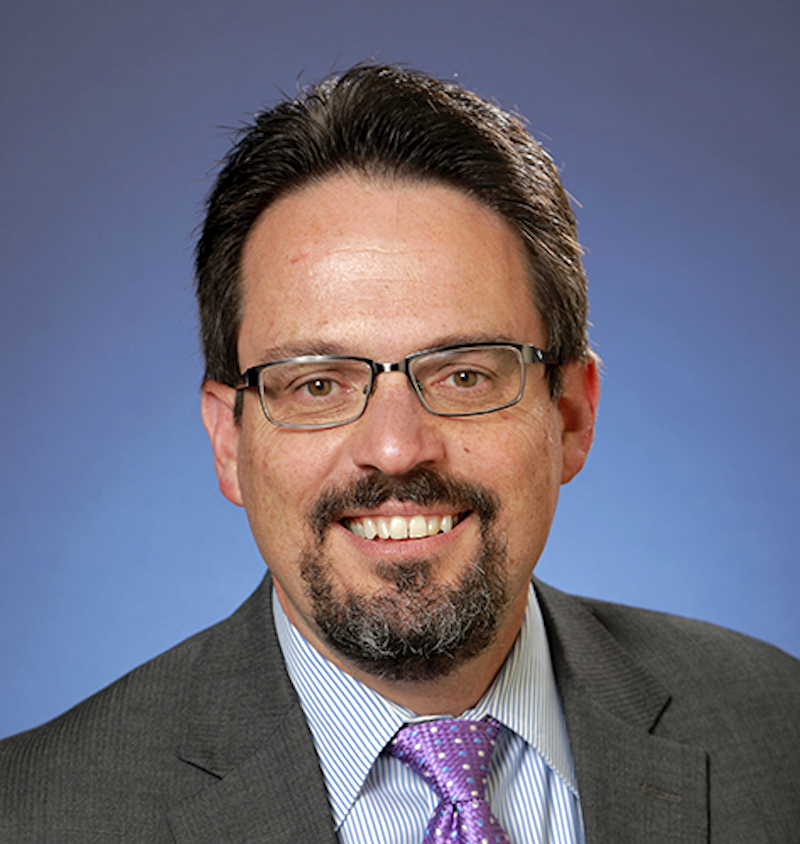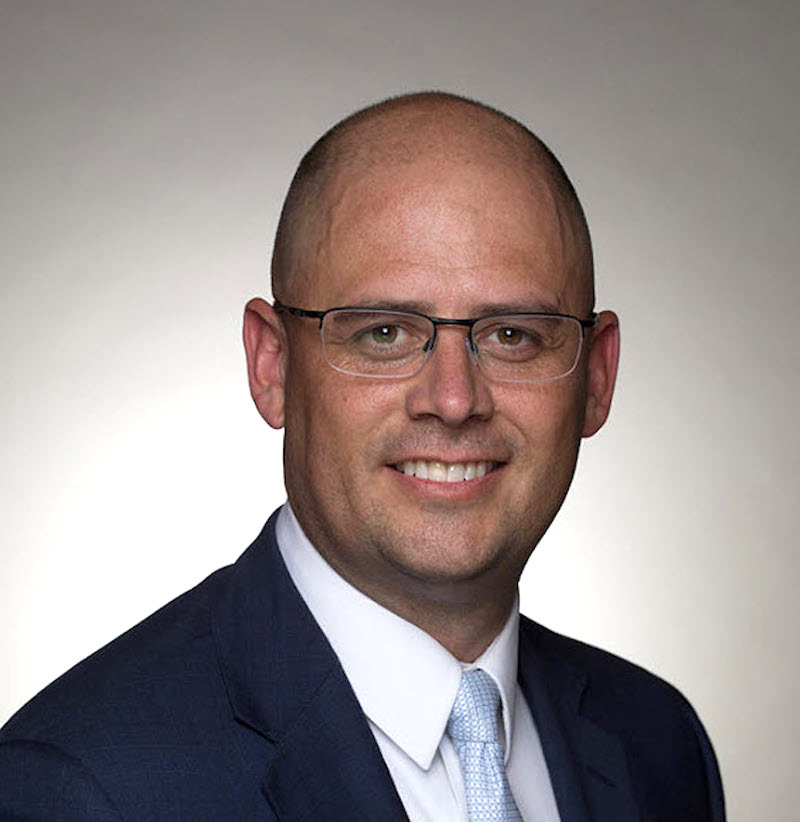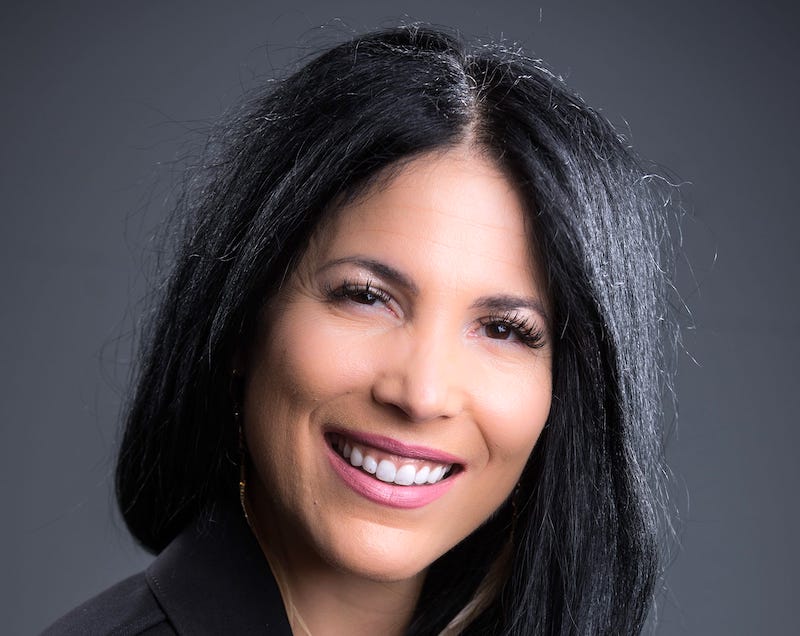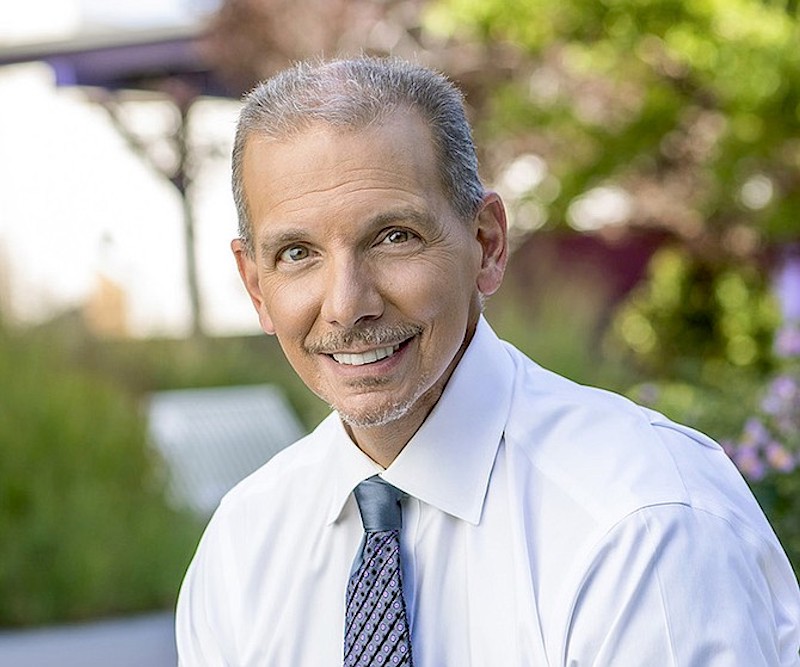EDITOR’S NOTE: Each quarter, the NNBW publishes a special “B2B Industry Focus” edition that centers on a certain industry. The fourth quarter’s B2B Industry Focus is on healthcare. This is the third in a five-part series of stories on that topic; the other parts are below. You can also read the Wednesday, Oct. 20, print edition for the full lineup.
Part One: Nursing shortage in Northern Nevada worsening as pandemic lingers
Part Two: Now affiliated, Renown Health-UNR Med leaders lay out next stepsPart Four: Charles River in Reno big part of biotech industry boomPart Five: From energy healing to ketamine, mental health treatment options are growing
In early September, during the latest surge of COVID-19 cases in Northern Nevada, the emergency department at Carson Tahoe Regional Medical Center was overwhelmed with patients.
And it wasn’t just because of people who had COVID-19.
“It was also folks who had other health issues that had just come to a point where they needed emergency care, and many of them in-patient care,” Alan Garrett, president and CEO of Carson Tahoe Health, told the NNBW in late September.
Simply put, the wave of COVID-19 hospitalizations that swept across Northern Nevada this past summer were crashing into a rush of patients who needed urgent medical care, many who had delayed it the previous 18 months because of pandemic-related fear.
“We knew that people were afraid to come to healthcare organizations last year, so folks stopped care,” Garrett said. “If you’re going for your annual routine checkup, you can put that off a little bit. But if you’ve got a chronic condition or something and you’re not seeking care, it gets worse. So, things got really rough here a few weeks ago.”
It’s one of the many challenges hospitals in Northern Nevada have faced this year as the highly transmissible Delta variant of the coronavirus continues to spread, once more crowding emergency departments, filling intensive care beds and leaving hospitals short-staffed.
The NNBW spoke with Garrett and other hospital leaders in the region to get an in-depth look at how their industry continues to be altered, financially and operationally, and what technology-related opportunities are on the horizon.
Carson Tahoe Health — Alan Garrett, president and CEO
Question: What have been the biggest challenges this year amid the lingering pandemic?Answer: The panic that occurred 18 months ago, that doesn’t exist. We’ve been here, we’ve done this, we have a better understanding of what to expect. And so I think that’s helpful from the perspective of it’s a little calmer. On the other hand, to be totally honest with you, there’s not the adrenaline rush of ‘we have to help save the world, so let’s rally to the cry of this pandemic that we’ve never faced.’
When this most recent surge came to Northern Nevada, I think the general consensus was, ‘Really? We’re going to do this all over again?’ And people are tired — not just the workload from taking care of patients, just the burden of life is different. Lots of people couldn’t get away on vacation, and we took the masks off and then we’ve put the masks back on in Nevada.
There’s just fatigue around that. People are just kind of at wit’s end. And it takes a toll. While that was probably true 18 months ago, the rally, the adrenaline, all of that helped disguise some of that. But you can’t just push that off to the side for that long. And so I think that’s an issue for us. I don’t blame folks, but we’ve got a number of clinicians, nurses, and others, that are like, ‘I’m done; I don’t want to do this anymore.’
Q: Hospitals across the country saw decreased revenues in 2020 for a variety of pandemic-related reasons. To what degree have those financial impacts continued this year?A: Last year, the revenue decline was of our own making. We ended up, from a resource perspective, saying, we were shutting down non-essential services, because we need to divert those resources elsewhere. This year, we’ve maintained OR volumes, we’ve remained open, we’ve been accessible — people need to have surgeries.
But for us, it’s staffing costs and it’s the supply costs. The vendors who have all this stuff that we need, especially to keep people safe, are charging a lot more money. I don’t know if that’s just price gouging, or it’s a lot more expensive to get product here because the distribution channels are all disrupted and the manufacturing channels are all disrupted, so that’s a piece of it. And the other piece of it is just expensive to be able to attract and retain staff. If you’re working a normal shift, we have to pay extra to have you work an extra shift. We’re paying a pretty significant amount of money to bring in traveling nurses and traveling techs and respiratory therapists.
We’re essentially break-even or at a loss by the time the year is over. And that’s going to be two years in a row. And that means fewer investments in new technology and new programs and all of that because we’ve got to be able to kind of maintain our financial position. So, it’s been rough.
Q: What difficult cuts has Carson Tahoe Health had to make over the past 18 months to maintain stability?
A: Right now, we’re arguing over small dollar amounts. ‘Do we need to do this? Do we need to do that?’ If you look at some of the marketing dollars we’ve spent, well, we just haven’t spent them this year. You get to a point where you say, what are the things that are absolutely critical? Staffing, supplies, maintaining equipment, maintaining facilities … and everything else is generally optional.
The struggle is it’s not just about what’s going on this year, it’s as we look out over a course of a five-year span, what are those investments we need to be making, what new programs do we need to be developing. And you don’t use current dollars for that, you use money that you put aside in the good years to spend that, and we’re not putting money aside.
Q: What do you see as some of the top opportunities in the healthcare industry in Northern Nevada?
A: I really think the future is less care in the hospital. Now, I don’t think we’re going to ever get rid of acute care hospitals, obviously, but there’s a lot of things that we can treat at home if we can figure out a way to connect you to remote monitoring, have nurse or physician or physician assistant check in each day, and swing by for house calls, all of that.
And I think that, in the end, we have to reduce the overall cost of health care. We make money because America, as a country, can’t afford the health care spend that we have. We’re trying to broaden access at our Walmart clinics, and urgent cares, as that’s more accessible for people. Getting to this campus is fine — Carson City is fairly small. But if you’ve got a Walmart clinic next door or an urgent care around the corner, that might be appropriate for you.
Northern Nevada Health System — Jason Madsen, COO Q: What have been the biggest challenges this year amid the lingering pandemic?
Q: What have been the biggest challenges this year amid the lingering pandemic?A: Forecasting for the unknown. When you consider just the way things are going, there just isn’t an easy way to project what’s going to happen in the future, and that pertains to things like staffing shortages, and how are we going to continue to meet the needs of the hospital and our clinics with the kinds of staffing shortages that we’re seeing. It also includes things like the supply chain. Other industries are also short staffed and it impacts the supply chain needs that we may have here in the hospital.
We also have to work around, how are we going to continue to operate high-quality patient safety care with these kinds of shortages? So, that requires a lot of pivoting of our operations. You’ll see some of the surges that come in have required us to look at the ways how are we providing care on a day-to-day, so that we don’t let things slip. That kind of encompasses what we’re looking at in 2021, and probably going into 2022 and 2023, to be quite honest.
Q: Hospitals across the country saw decreased revenues in 2020 for a variety of pandemic-related reasons. To what degree have those financial impacts continued this year?
A: From a financial perspective, I would say that there’s been a little bit of a rebound just because of the volume. People are starting to get a little bit more comfortable with returning to the hospital, returning to get their surgeries done and things like that. Financially, I’d say we’re finding ourselves coming back. I wouldn’t say we’re 100% recuperated yet; in fact, it’s going to take some time for that. But when you look at the trajectory and where we’re going, it’s positive.
For us, it’s less about the financial aspects. We’re more concerned … let’s assume things do get back to normal. What is that new norm going to be? It’s understanding how that’s going to look, and then being able to adjust to it, and everything else will fall into place after that.
Q: What difficult cuts has NNMC had to make over the past 18 months to maintain stability?A: We haven’t had to lay off any staff. Quite on the contrary — we’re looking for staff every day. Even early in the pandemic, we never had to do any cuts. We were very fortunate, and I think it just came down to just being able to manage appropriately, which we’ve been able to; and thank goodness, because we can’t find enough staff now.
Q: What do you see as some of the top opportunities in the healthcare industry in Northern Nevada?
A: The more technology is embraced, the more opportunities start to reveal themselves. It really is going to enhance the way that we look at the entire continuum of care across the board. And what I mean by that is, you’ve got your preventative care, you’ve got your acute care, you’ve got post-acute care, and then you’ve also got your chronic care management. And so when you look at technology it’s really allowing patients to understand their needs a little bit more, but it also allows providers to understand what those needs are in a more timely manner so that they can address those needs, quicker.
I think telehealth is kind of like just surface of what we anticipate happening down the line. Technology, I think, is all about taking advantage of addressing care earlier. For us at Northern Nevada Health System, that means creating access points that aren’t just the hospital. Today, we’ve got Northern Nevada Medical Center, we’ve got some primary care clinics, we’re going to have (the new) Sierra hospital down the line.
Those are going to be really good for making sure we can address some of these acute needs, but we’re looking at expanding our offerings and access points throughout the community, and that’s going to expand our primary care footprint. We want to make sure that we have primary care physicians in this community so that if a patient wants to go see a doctor, they don’t have to wait for three months to go do that.
Saint Mary’s Health Network — Tiffany Coury, CEO Q: What have been the biggest challenges this year amid the lingering pandemic?
Q: What have been the biggest challenges this year amid the lingering pandemic?
A: I want to highlight three things. The first one is that where we’ve been forced to reimagine the way that we’re delivering healthcare. The second is really the strain on our resources. And then the third is the fact that it’s created an instability in our operations.
As far as reimagining how we deliver healthcare, the social distancing really changed the way that the patient wanted to receive healthcare. And so, we’ve had to be exceptionally nimble, to be able to reach them where they are and make sure they’re still getting access to the care they need. Some of those pain points have actually created ‘aha’ moments for the healthcare industry, and things that we should continue to do in the long term.
The fact that we’re being reimbursed right now for telehealth visits or even telephone visits — that’s huge for us because we’re able to then access patients in the rural communities. We’re able to check in with patients more frequently, even remotely, to make sure that they’ve got their medications and things of that nature. We at Saint Mary’s think that’s going to carry forward, and we will have a better product at the end of the pandemic, believe it or not.
The second point is really the strain on our resources. The surging of patients is causing something that feels different for us. The patients are typically higher acuity. They need more nursing care, they need more ancillary care, they need more physician care. What’s happening is that we can’t fully use all of our physical beds, because our staffing is so constrained on the higher acuity population that we only have a limited number of staffed beds.
And that leads into the third point: the instability in our operations. Changes in visitation that we’re having to make, depending on where our community’s COVID meter is. Where are we in the influx? How can we keep our patients, our staff and our physicians safe when they’re in these four walls? The amount of infrastructure that we’ve put in for temperature checks and making sure people are attesting when they come into work that they don’t have symptoms, and then we’re staffing our front door differently.
These are operational things we’ve never dealt with that we’re having to kind of figure out on the fly, and I think every hospital across the community is dealing with that as well.
Q: Hospitals across the country saw decreased revenues in 2020 for a variety of pandemic-related reasons. To what degree has those financial impacts continued this year?A: The strains last year financially look very different than they do this year. Last year, it was a loss of volume, because people were so afraid to come to the emergency department, even when they needed to. And then strains we as an industry put on ourselves, such as canceling surgical cases. And that really — hindsight being 20/20 — did more harm in our patient care delivery system. I’m glad and pleased that this year we are doing things different, and for medically necessary cases, Saint Mary’s continues to do those cases.
Where the financial constraint last year was all revenue generating, this year it’s more high expense. We’re staffing the front doors with people we never have before, so we’ve increased labor there. And the staffing shortages are causing all of us to need to pay a premium for even that one body, whether it be a nurse, or an RT, or even a CNA.
Q: What difficult cuts has Saint Mary’s had to make over the past 18 months to maintain stability?
A: Earlier this year, we ended up changing the structure of our nursing middle management, to be able to put more bodies frontline in the workforce. We’ve made that change, to be able to help us with our staffing crisis, and that was that was about April timeframe. And that’s really the toughest decision we’ve had to make at this point. The other tough decisions really are just paying a premium for the staff.
Q: What do you see as some of the top opportunities in the healthcare industry in Northern Nevada?A: The fact that we’re redesigning the way we deliver telemedicine, I think that’s a huge opportunity for us, not only on the outpatient side, or the front-end side, but also post-acute. I will tout that some of our colleagues in the market have nice programs starting to roll out that do remote patient monitoring, so that patient can actually recover in their home with a hospital level professional monitoring their vital signs.
And I think that’s an amazing way for us to think differently about how we’re delivering the care, especially when our resources inside the hospital are so are so limited.
Telemedicine has been huge for us. We’ve been able to gain access to California providers that are licensed in the state of Nevada, but can deliver telemedicine care to our patients. So, it’s helped us close an access gap. One provider in a building here can only see so many patients, and so being able to supplement that has been a wonderful stopgap for us.
Renown Health — Dr. Tony Slonim, president and CEO
Q: What have been the biggest challenges this year amid the lingering pandemic?A: The pandemic continues to pose problems in a variety of areas. One issue is that people are having delayed care as a result of the pandemic. People are coming in sicker. They’re coming in with care that was postponed, they have issues where they had heart or cancer care or some other care and they were not able to get access, so that’s a problem.
Another is our workforce issues, particularly here in Northern Nevada. In Nevada, we rank 46th overall in health status. We’re trying to help get the state righted to increase that and improve. We think it’ll take us a decade to get it done, but we’d really like to break through the 30s in the next five to 10 years.
With that, though, are tremendous workforce shortages across all disciplines — doctors, nurses, specialists, pharmacists, therapists, technicians … the whole megillah. And addressing those issues is front and center for us. And it’s only made worse from the pandemic because people are leaving the field, they don’t want to be doctors and nurses anymore.
Q: Hospitals across the country saw decreased revenues in 2020 for a variety of pandemic-related reasons. To what degree have those financial impacts continued this year?A: The majority of healthcare systems around the country are struggling financially. Despite all of the CARES Act funding, there’s not been a release of money since June of 2020. And it cycles throughout so, ultimately, I think we got the payout last December. Operationally, we were decimated — remember, we closed operating rooms and people went away for care and all of the rest. And people are coming back, but they are coming back slower than we expected.
Q: What difficult cuts has Renown Health had to make over the past 18 months to maintain stability?A: We’ve tried to keep our eye on how do we make sure we are financially stable and serving the best needs. I think it’s good to work to continue to make sure we’re adapting as time goes on, making sure that our structures are where they need to be. Our mission here is to serve the health and healthcare needs of the community and we have to make sure they’re aligned with that for the majority of the people.
So if we have programs that we’ve developed because we thought they were cool but people aren’t using them, it doesn’t do any good as a not-for-profit health system to keep those programs running if they’re not adding value. And so it’s not unusual that we will modify and change and address appropriately — that’s what strategy is all about — as we’re going forward to make sure our alignment is consistent with our mission. So there’s been a couple of changes we’ve made with that over time.
Q: What do you see as some of the top opportunities in the healthcare industry in Northern Nevada?
A: I think, for me, they’re about, how do we deliver care with a different mindset, with a different vision? If we’ve learned anything, we’re never going to have enough professionals. We have to think smarter and differently about how to do it. And we have to be able to figure out how we use technology to expand our scope. The Renown Transfer and Operations Center is what we invested in.
And what that does is we’re creating a hospital in-home with the technology and easy access and better coordination for people after they leave the hospital. Maybe even before they get to the hospital so they can live in their house and eat their own food and have their family take care of them and watch their own TV, with the appropriate monitoring from professionals when needed. And so we think that the use of the technology not only enhances better care coordination, it provides care in a consumer-friendly, easy access space, like their home. Nobody wants to be in my hospital, they’d rather be on their couch.
We’ve been investors in telemedicine for a really long time. And this has made us realize that while we’re serving the needs of our community, it’s not only about how we do that with rural communities, but how we do it right down the block. People who live down South Virginia (Street) can access us by phone, and why shouldn’t they? You shouldn’t have to be in a rural community to access us by phone.
And so that’s some of the work we’ve been trying to move forward with virtual care. So it’s all about technology, it’s all about better communication and coordination of care. And those are the things that will get us through, I think, in a much more efficient management of chronic conditions moving forward.
Editor’s Note: These interviews have been edited slightly for length and clarity.




Comments
Use the comment form below to begin a discussion about this content.
Sign in to comment